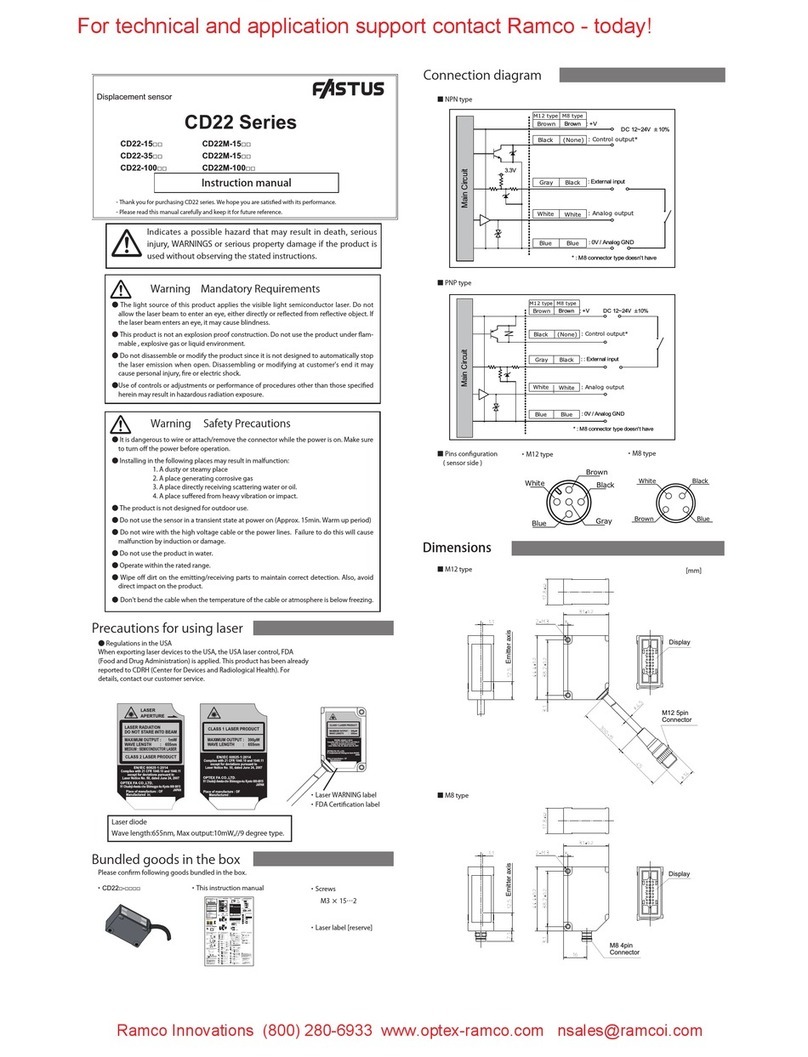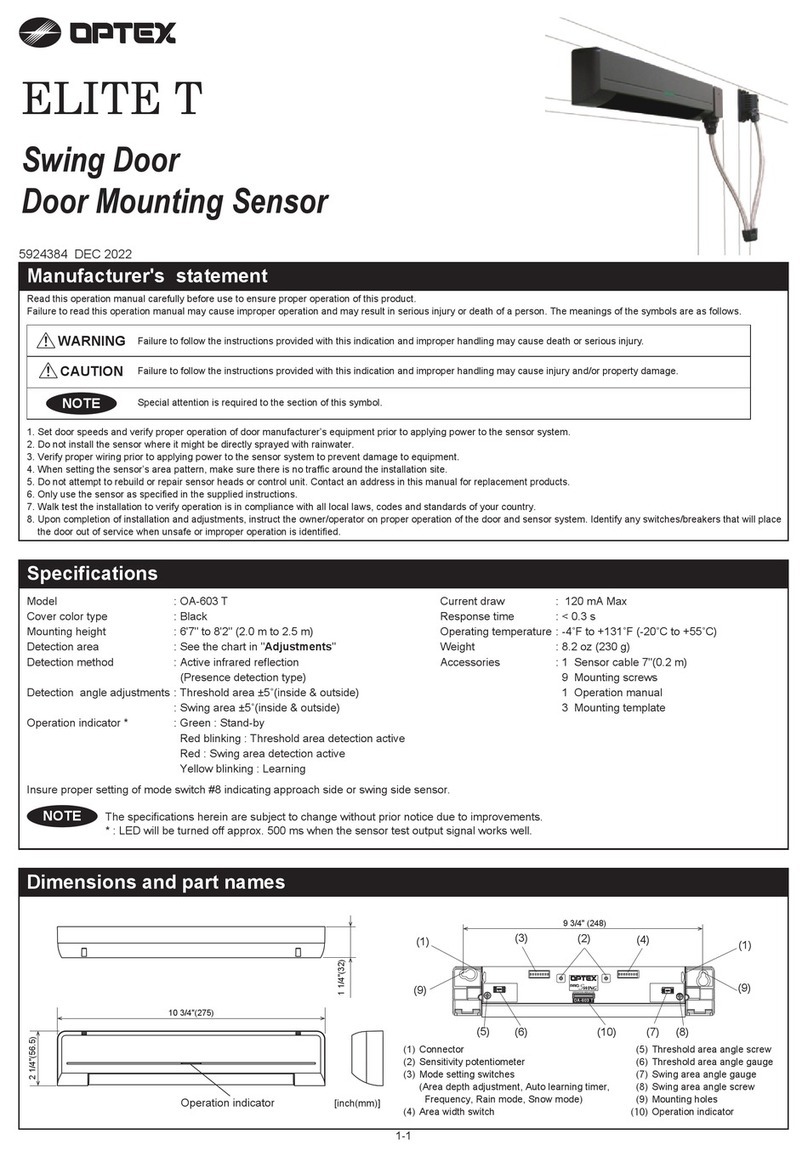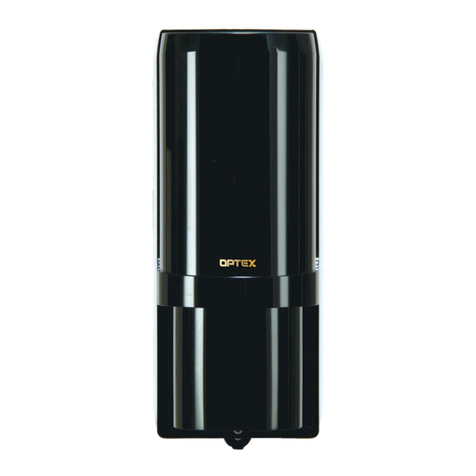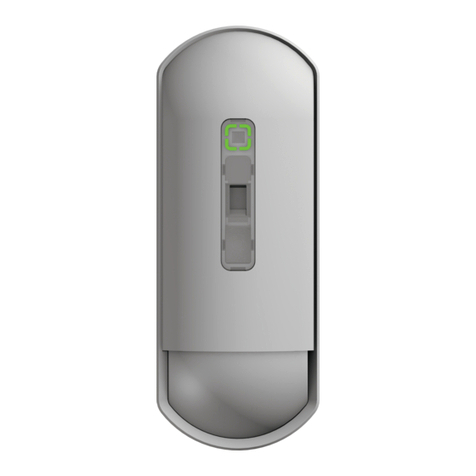Optex Fiber SenSys Laser Defender LD308SH Installation and operating instructions
Other Optex Security Sensor manuals
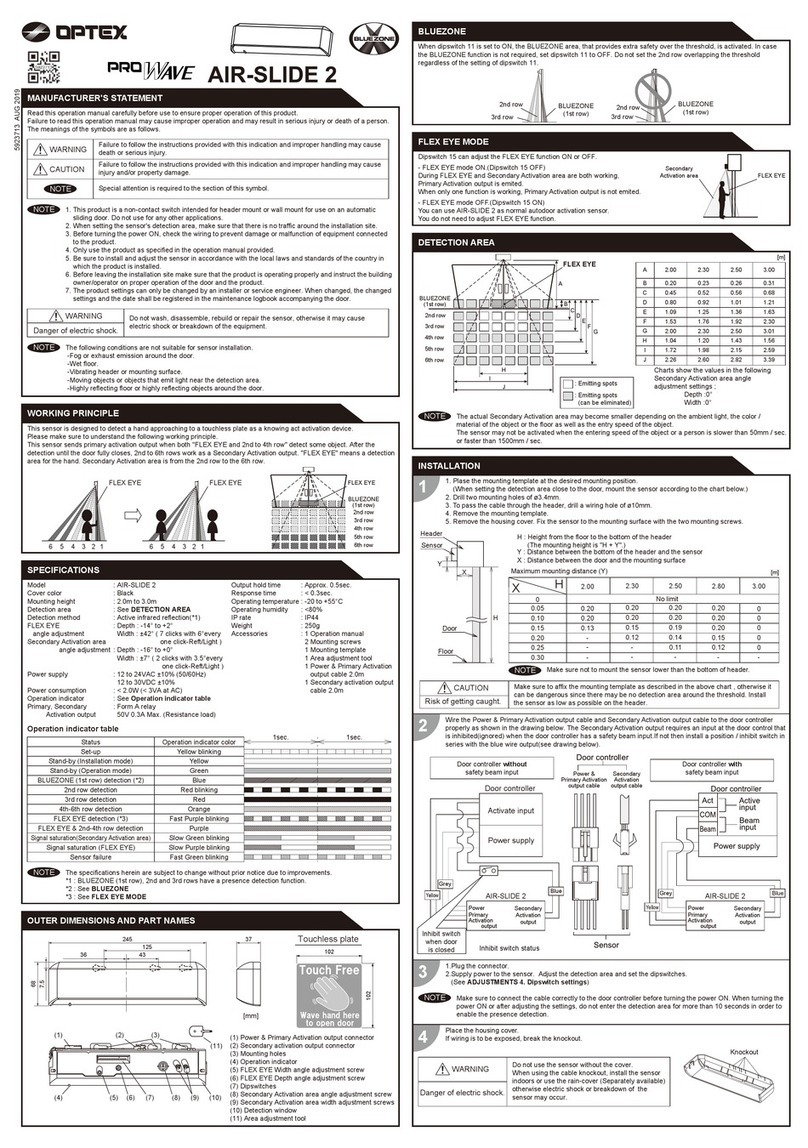
Optex
Optex PROWAVE AIR-SLIDE 2 User manual
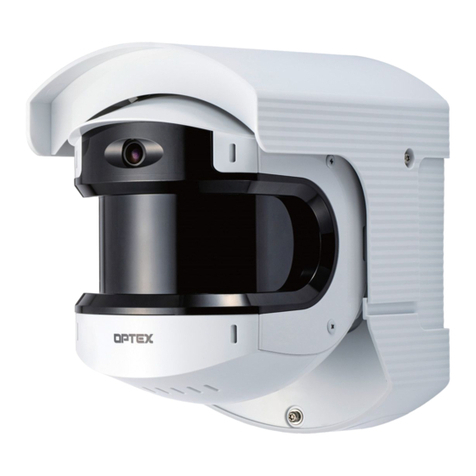
Optex
Optex REDSCAN PRO RLS-50100V User manual
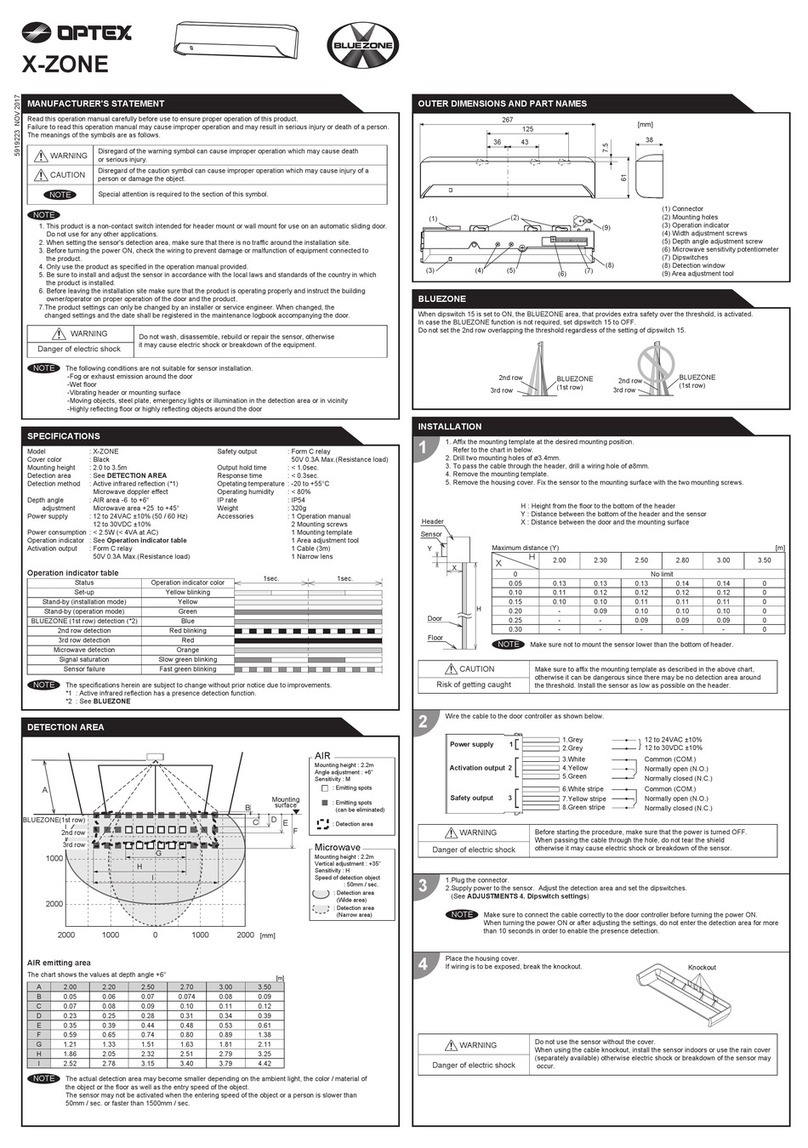
Optex
Optex X-ZONE User manual
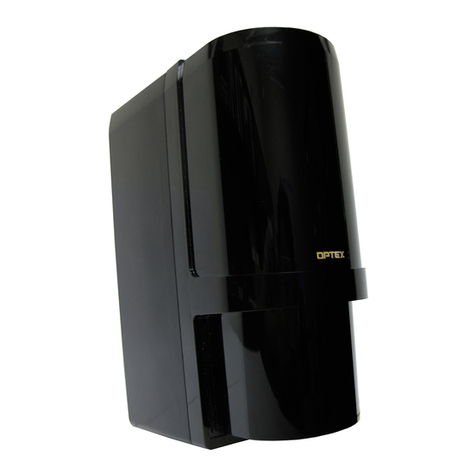
Optex
Optex AX-100TFR Series User manual
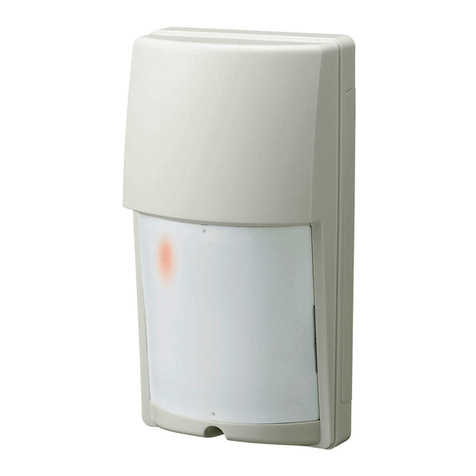
Optex
Optex LX-402 User manual
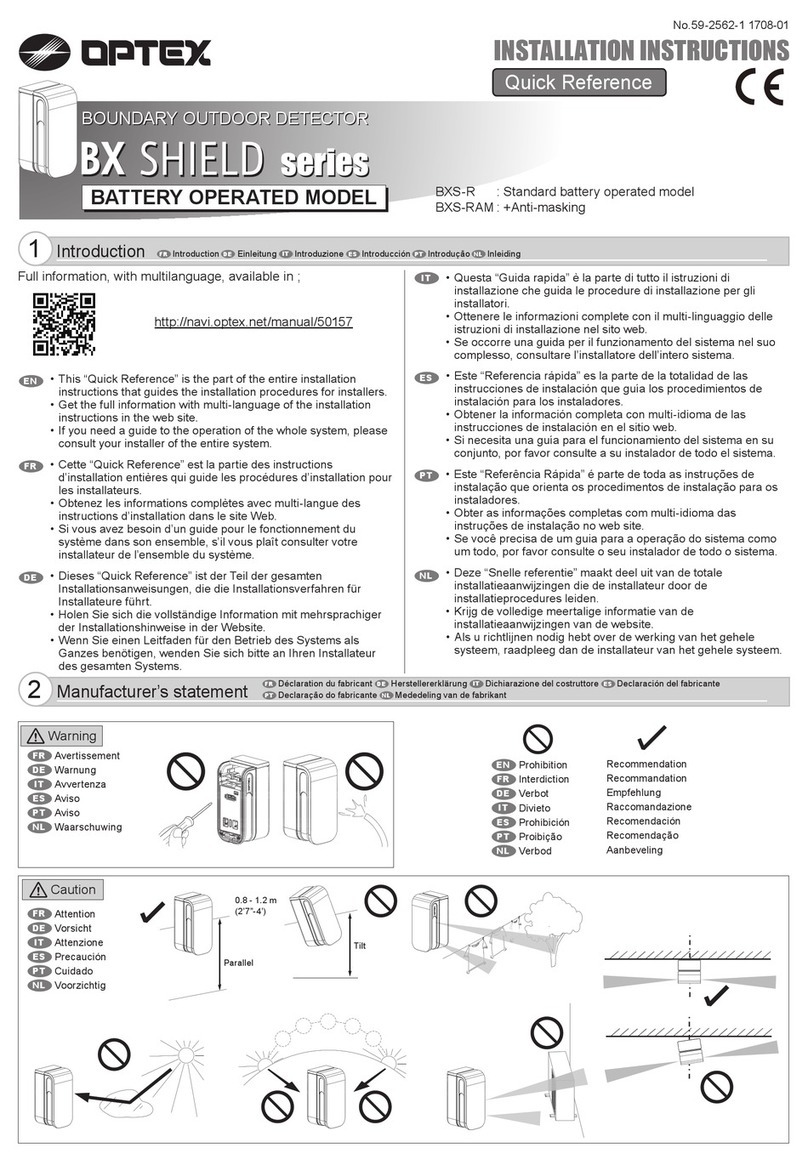
Optex
Optex BX SHIELD Series User manual
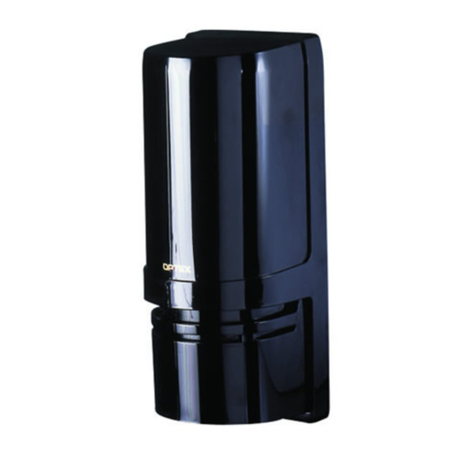
Optex
Optex AX-330PLUS User manual

Optex
Optex RLS-3060 User manual
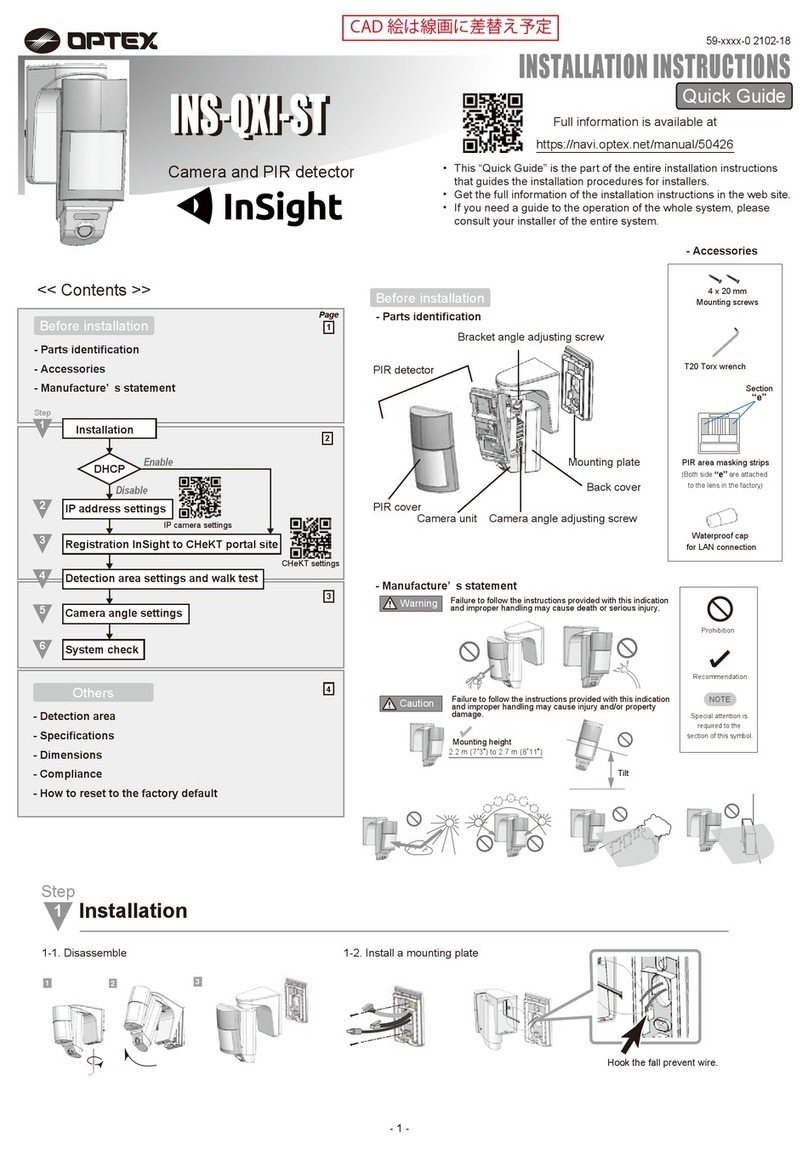
Optex
Optex InSight INS-QXI-ST User manual
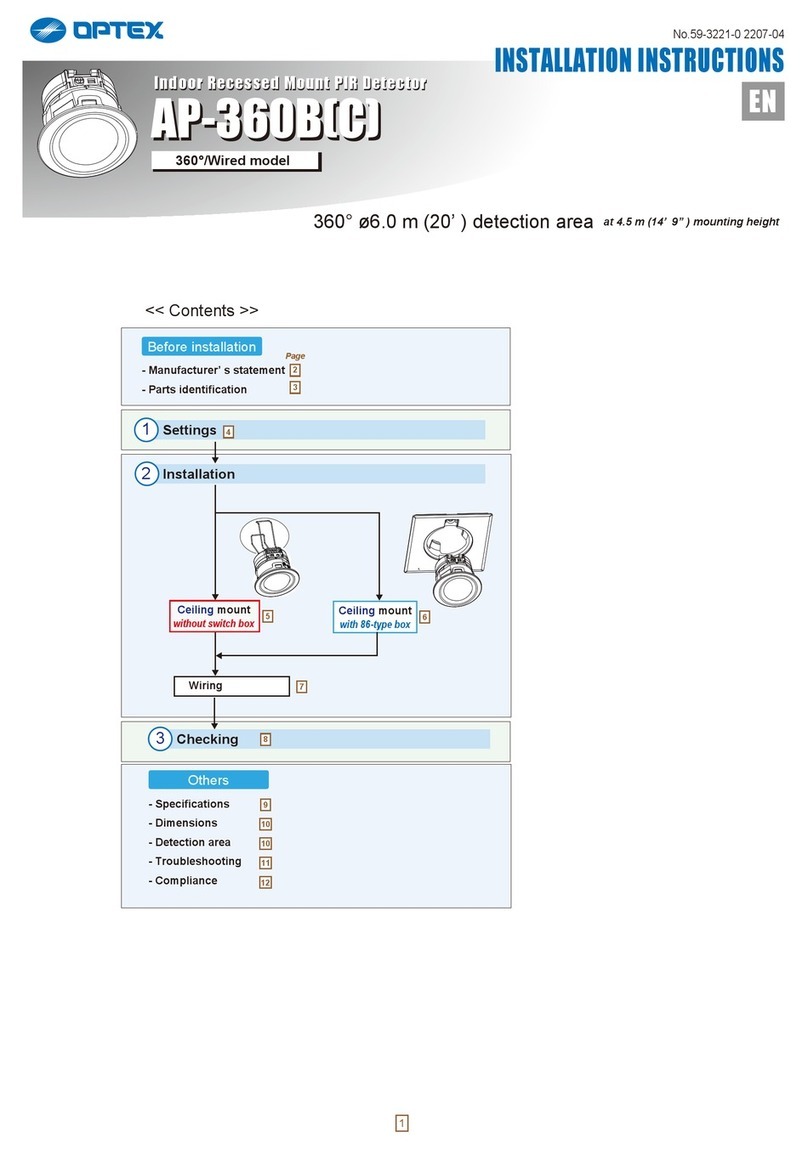
Optex
Optex AP-360B User manual
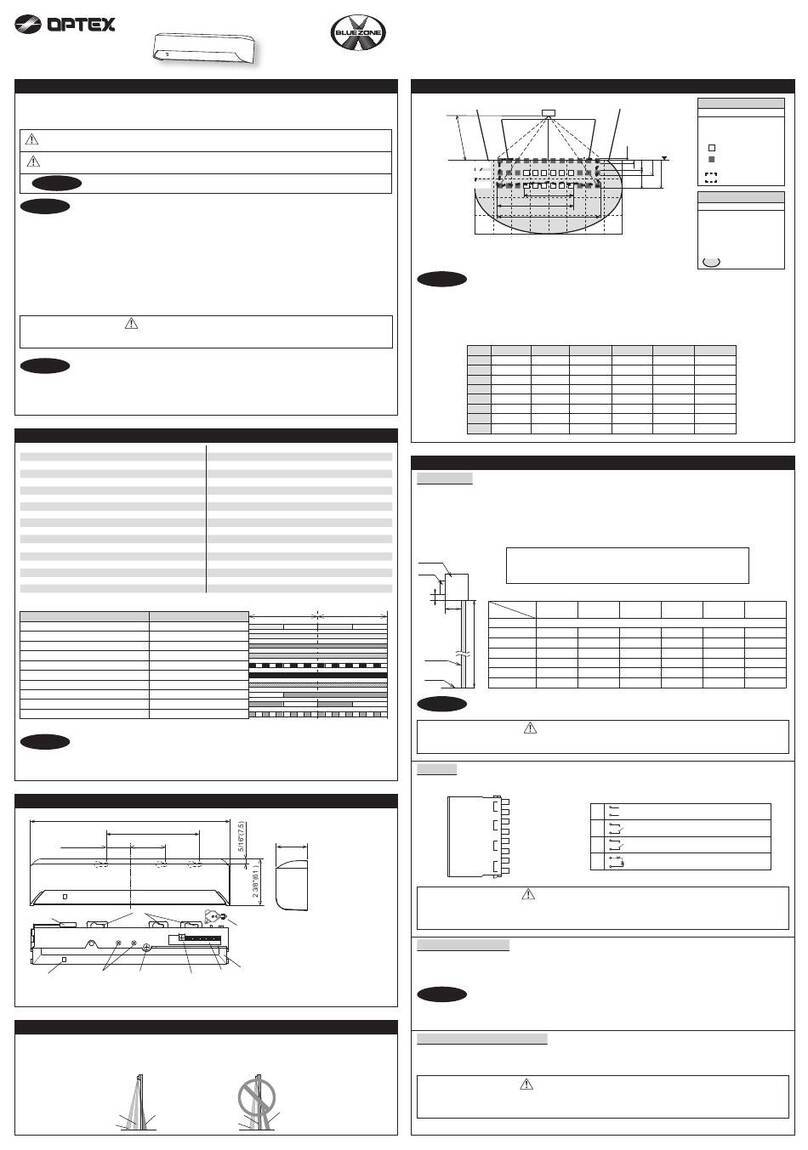
Optex
Optex sensor User manual
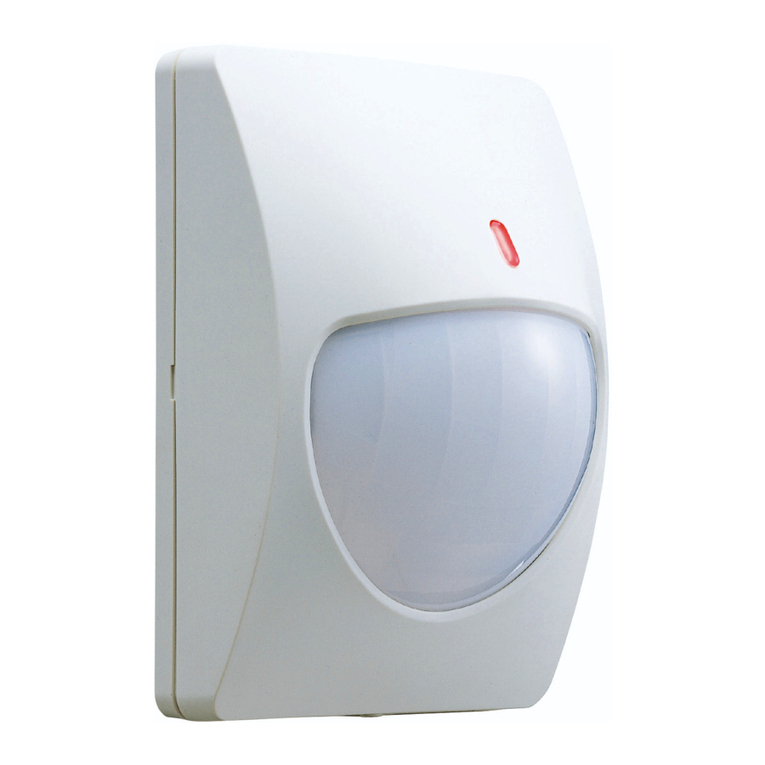
Optex
Optex CX-702 MKII User manual
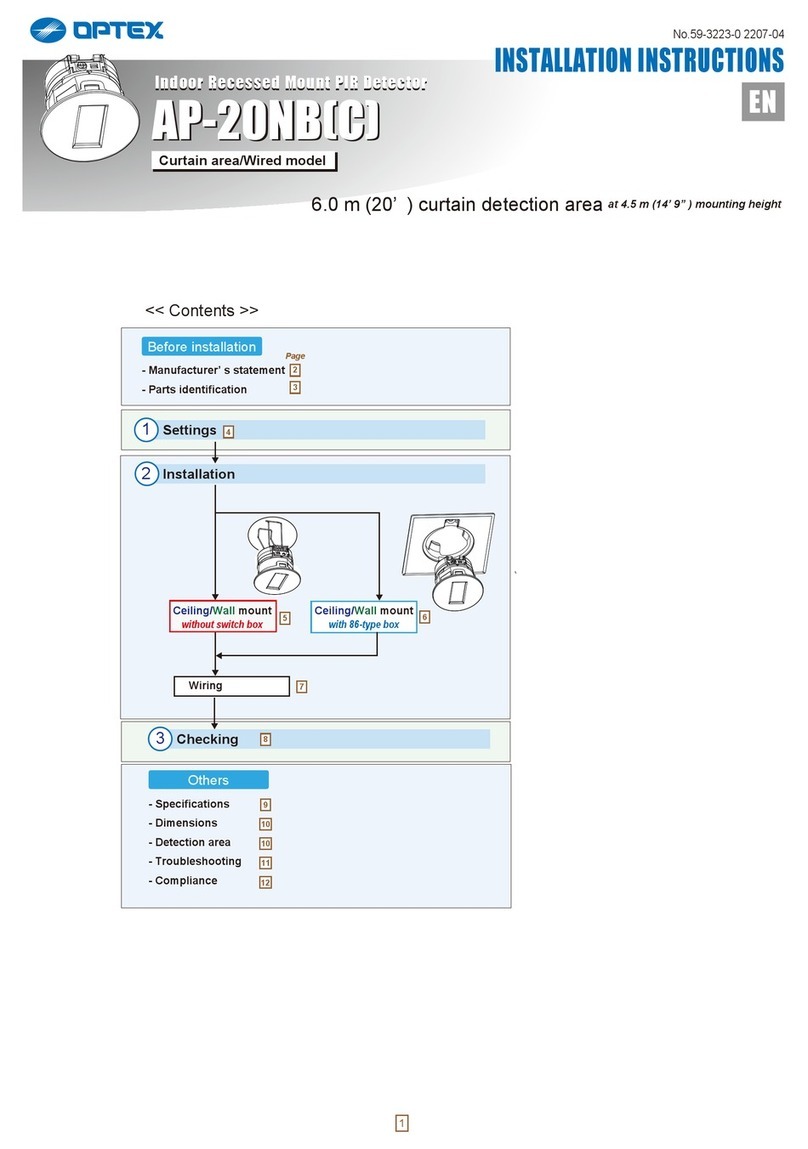
Optex
Optex AP-20NB(C) User manual
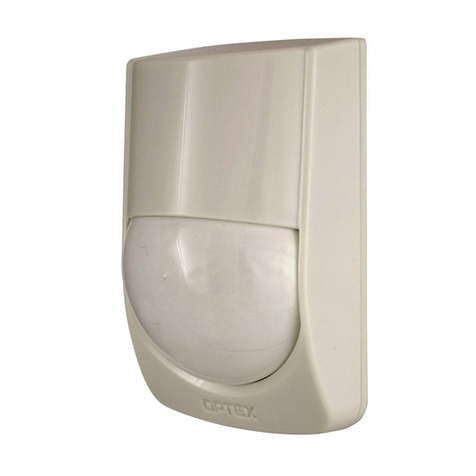
Optex
Optex RXC-DT-X5 User manual
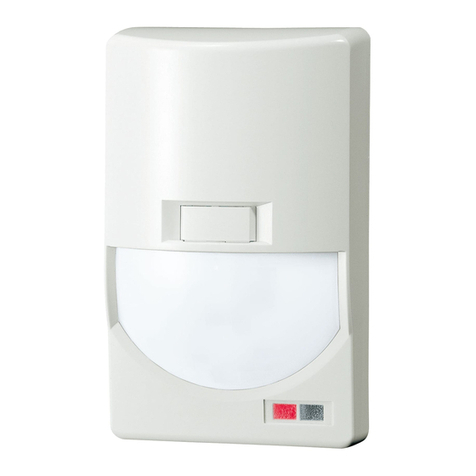
Optex
Optex CX-502 User manual
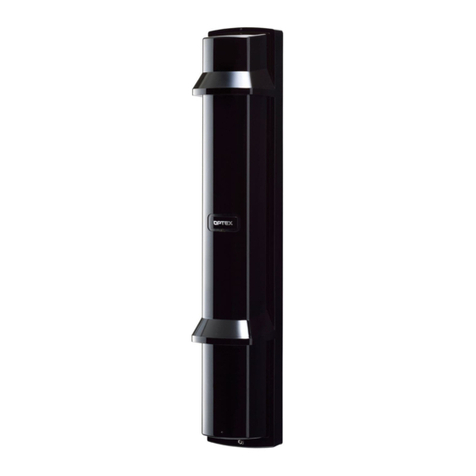
Optex
Optex Smart Line Series User manual
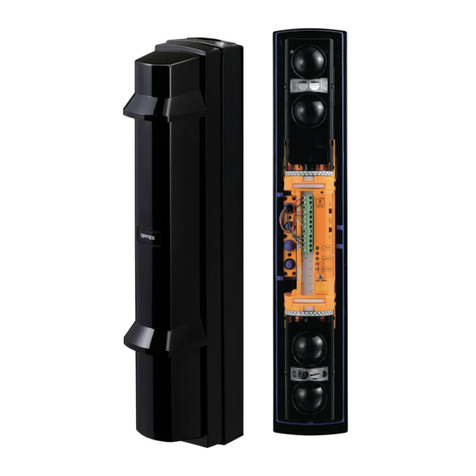
Optex
Optex Smart Line SL-350 QNR User manual
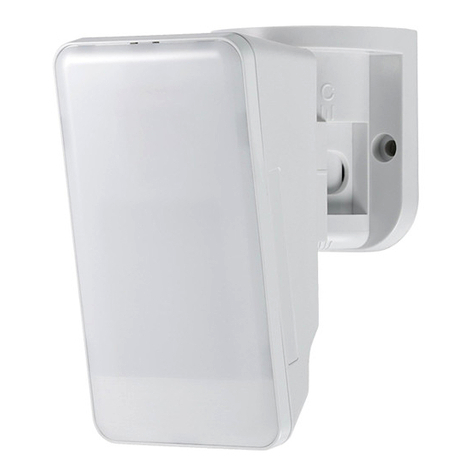
Optex
Optex URX-P01WH Operation and maintenance manual

Optex
Optex DX-40 User manual
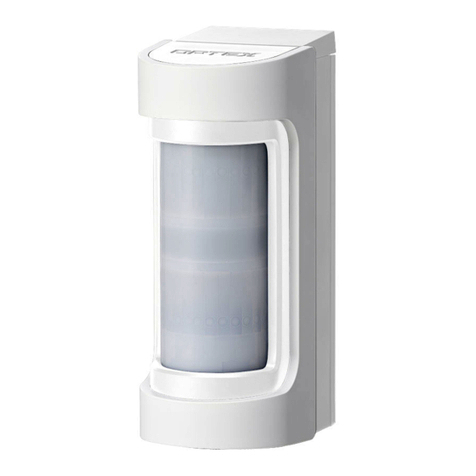
Optex
Optex VX Shield Series User manual
Popular Security Sensor manuals by other brands

Shinko
Shinko SE2EA-1-0-0 instruction manual

Det-Tronics
Det-Tronics X Series instructions

ACR Electronics
ACR Electronics COBHAM RCL-300A Product support manual

TOOLCRAFT
TOOLCRAFT 1712612 operating instructions

Elkron
Elkron IM600 Installation, programming and functions manual

Bosch
Bosch WEU PDO 6 Original instructions
